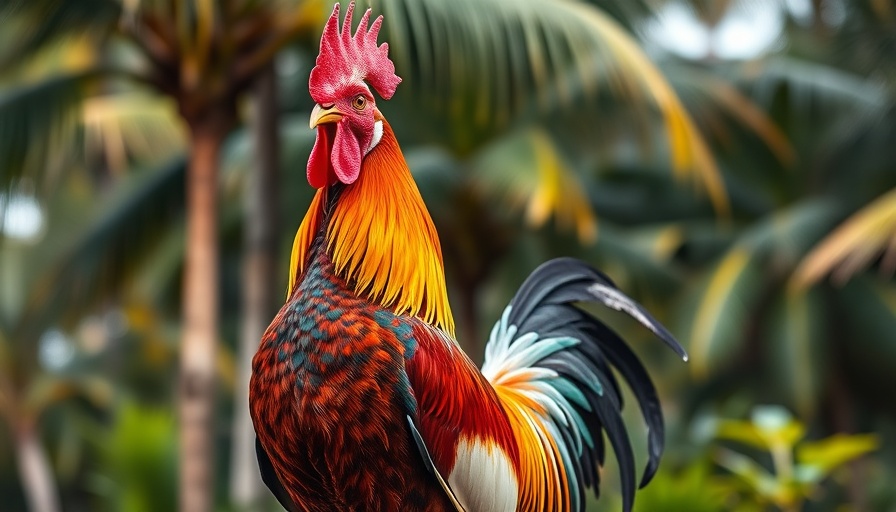
The Unruly Population of Hawaiian Feral Chickens
Hawaii, particularly the island of Kauai, has become infamous for its feral chicken population, which basks in the warm sun and rummages through both urban and rural areas. This phenomenon captivates tourists who delight in the sight of chickens wandering freely, yet frustrates residents who see them as pests. These chickens not only create disturbances by blocking roads and raiding gardens but also contribute to health concerns due to unsanitary droppings.
From Domesticated Origins to Wild Flocks
The vibrant history of these birds traces back over a millennium, initiated by Polynesian voyagers who introduced the wild red jungle fowl to the islands. Following this, domestic chickens brought in by explorers like Captain Cook supplemented the gene pool. Economic shifts during the late 1800s further expanded their numbers as abandoned plantation chickens mingled with the local fowl populations, kickstarting an ongoing cycle of breeding. This was exacerbated by natural disasters, notably hurricanes Iwa and Iniki, which destroyed coops and liberated more chickens into the wild.
Legislating Feral Chickens
In July 2024, Hawaii lawmakers took action by enacting Senate Bill 2401 to manage this burgeoning chicken issue. This initiative outlines funding for control programs and emphasizes public education to discourage feeding chickens, a practice that exacerbates their population growth. Property owners are now enlisting professional help to mitigate the chaos, with a private pest control service contracted to trap these birds—for a price. While some locals welcome assistance to reduce disturbances, eco-ethicists caution against disregarding the ecological implications, emphasizing that a deeper understanding of these chickens’ role is needed.
An Ongoing Cultural Dilemma
Ultimately, feral chickens are a reflection of Hawaii's unique blend of culture and ecology. On Kauai, what some may see as a nuisance is regarded by others as part of the island's charm. As debates about management continue, the popularity of these chickens suggests a complex relationship between the community and its non-native inhabitants. Understanding this dynamic could guide future initiatives aimed at balancing human concerns with ecological integrity.
 Add Row
Add Row  Add Element
Add Element 



 Add Row
Add Row  Add
Add 
Write A Comment